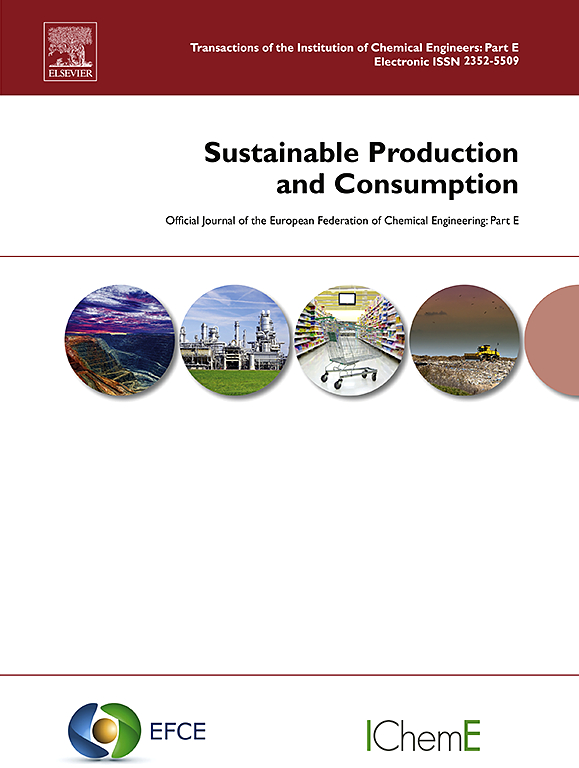Economic and ENvironmental Impact Assessment for Sustainability (EENIAS): An innovative method to support design for remanufacturing and remanufacturability evaluation
IF 10.9
1区 环境科学与生态学
Q1 ENVIRONMENTAL STUDIES
引用次数: 0
Abstract
Significant effort has recently been directed towards promoting remanufacturing as a circular and sustainable approach to production. However, current methods for supporting design for remanufacturing and remanufacturability evaluation often lack integration and practical applicability, failing to address the complex trade-offs and interdependencies inherent in remanufacturing processes. To this purpose, this study addresses the need for methods to evaluate the feasibility of product remanufacturing through proposing a novel integrated method named Economic and ENvironmental Impact Assessment for Sustainability (EENIAS), enabling the assessment of remanufacturability for existing products or those in the detail design stage, by analysing diverse remanufacturing scenarios to quantify their economic and environmental impact. The method is demonstrated and validated through two case studies from different industries: an electrical lighting product and an accumulator used in the oil and gas sector, highlighting its applicability. The results quantify how key remanufacturing scenarios are performing economically and environmentally, offering insights into the products' remanufacturability and the design strengths for applying a Circular Business Model (CBM) based on remanufacturing. The luminaire demonstrated strong potential for remanufacturing, with 23 out of 31 remanufacturing scenarios showing significant financial and/or environmental benefits. In the accumulator case, the analysis revealed the dominance of the accumulator's shell as a significant environmental impact driver, though its financial impact was not equally significant. Consequently, the application of EENIAS provided the critical insight that substantial environmental gains could be achieved if the company designs the product in such a way that the shell does not require replacement after the usage stage. The EENIAS approach supports decisions for remanufacturing and sustainable product design practices, such as Design for Remanufacturing, by providing a detailed assessment of the products' remanufacturability and its potential for CBM application.
可持续发展的经济和环境影响评价(EENIAS):一种支持再制造设计和可再制造性评价的创新方法
最近,在推动再制造作为一种循环和可持续的生产方式方面做出了重大努力。然而,当前支持再制造设计和可再制造性评估的方法往往缺乏集成度和实用性,未能解决再制造过程中固有的复杂权衡和相互依赖性。为此,本研究提出了一种新的可持续性经济与环境影响评估方法(EENIAS),以解决产品再制造可行性评估方法的需求,通过分析不同的再制造情景,量化其经济和环境影响,从而评估现有产品或处于详细设计阶段的产品的可再制造性。该方法通过来自不同行业的两个案例研究进行了演示和验证:电气照明产品和石油和天然气行业使用的蓄电池,突出了其适用性。结果量化了关键的再制造方案在经济和环境方面的表现,为产品的再制造性和基于再制造的循环商业模式(CBM)的设计优势提供了见解。该灯具展示了强大的再制造潜力,31个再制造方案中有23个显示出显著的财务和/或环境效益。在蓄电池案例中,分析揭示了蓄电池外壳作为一个重要的环境影响驱动因素的主导地位,尽管其财务影响并不同等重要。因此,EENIAS的应用提供了重要的见解,即如果公司设计的产品在使用阶段后不需要更换外壳,则可以实现实质性的环境收益。EENIAS方法通过提供产品可再制造性及其CBM应用潜力的详细评估,支持再制造和可持续产品设计实践的决策,例如再制造设计。
本文章由计算机程序翻译,如有差异,请以英文原文为准。
求助全文
约1分钟内获得全文
求助全文
来源期刊

Sustainable Production and Consumption
Environmental Science-Environmental Engineering
CiteScore
17.40
自引率
7.40%
发文量
389
审稿时长
13 days
期刊介绍:
Sustainable production and consumption refers to the production and utilization of goods and services in a way that benefits society, is economically viable, and has minimal environmental impact throughout its entire lifespan. Our journal is dedicated to publishing top-notch interdisciplinary research and practical studies in this emerging field. We take a distinctive approach by examining the interplay between technology, consumption patterns, and policy to identify sustainable solutions for both production and consumption systems.
 求助内容:
求助内容: 应助结果提醒方式:
应助结果提醒方式:


